You will need:
- Oreo cookies (or any other cream-filled chocolate cookies you have on hand). We used some generic ones in this version.
- A blunt table knife (aka butter knife)
- A paper plate
- A pen
- One green and one blue texta
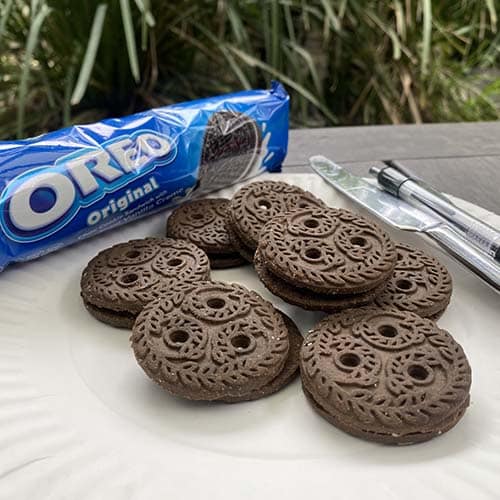
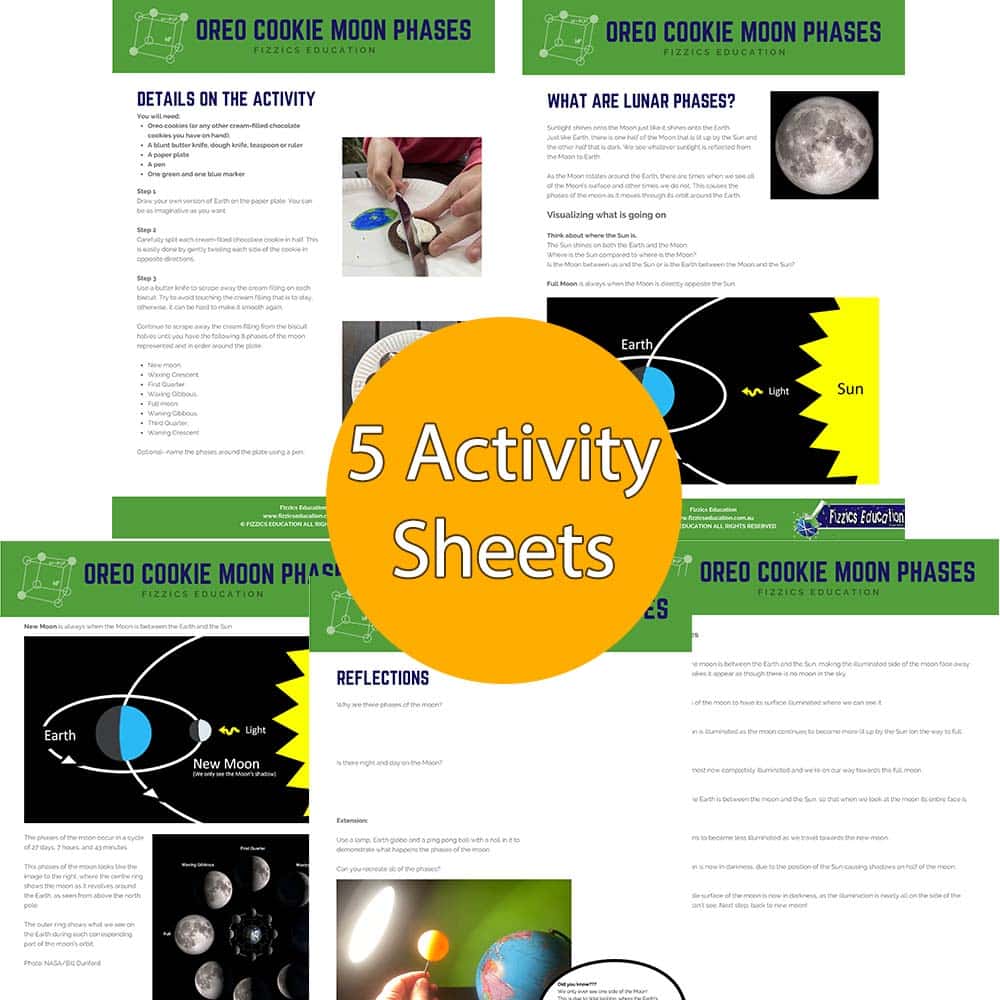
Go further – buy 5 x student activity sheets as extension worksheets.
This student science booklet has been created by experienced science educators from the Fizzics Education team.
Use these student worksheets as blackline masters for your science class!
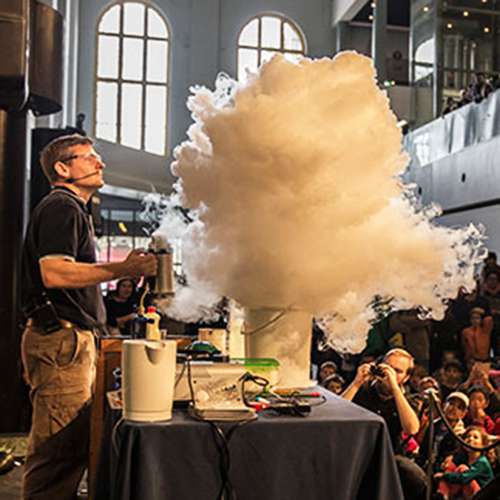
School science visits since 2004!
– Curriculum-linked & award-winning incursions.
– Over 40 primary & high school programs to choose from.
– Designed by experienced educators.
– Over 2 million students reached.
– Face to face incursions & online programs available.
– Early learning centre visits too!
More information
Weirdly, it takes 27 days, 7 hours & 43 minutes for the moon to complete an orbit around the Earth however the cycle of the 8 Moon phases take 29.5 days due to changes in the relative position of the Sun, Moon and the Earth.
New Moon
- Occurs when the Moon is between the Earth and the Sun, making the illuminated side of the Moon face away from us
Waxing Crescent
- The beginnings of the Moon to have its surface illuminated where we can see it.
First Quarter
- Half of the Moon is illuminated as the Moon continues it becomes more lit up by the Sun (on the way to Full Moon).
Waxing Gibbous
- The Moon is almost now completely illuminated and we’re on our way towards the Full Moon
Full Moon
- Occurs when the Earth is between the Moon and the Sun, so that when we look at the Moon its entire face is illuminated.
Waning Gibbous
- The Moon begins to become less illuminated as we travel towards New Moon.
Third Quarter
- Half of the Moon is now in darkness, due to the position of the Sun causing shadowing on half of the Moon,
Waning Crescent
- Almost the whole surface of the Moon is now in darkness, as the illumination is nearly all on the side of the Moon that we can’t see. Next step, back to New Moon!
You can model the phases of the Moon with a lamp, ball and Earth model.
Earth, Sun and Moon
Years 3 to 6
Maximum 30 students
Science workshop (NSW & VIC)
60 or 90 minutes
Online Class Available
Space Science Parties
Launch rockets!
Make 'Alien' slime!
Discover how spaceships work
All about our cosmos and more
From $395 inc. GST
Destination Moon & Beyond - Secondary Science
Years 7 to 10
30 to 240 students
Science workshop or show
60 or 90 minutes
Online Class Available

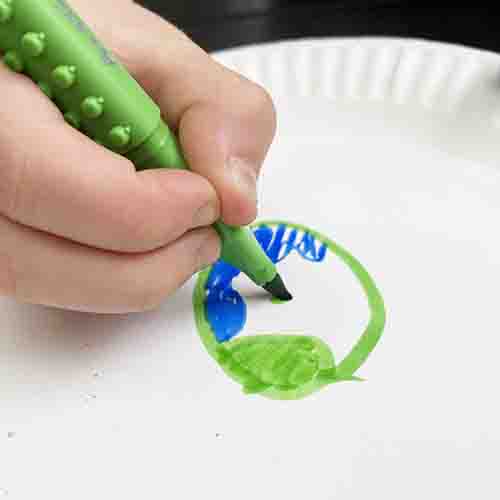
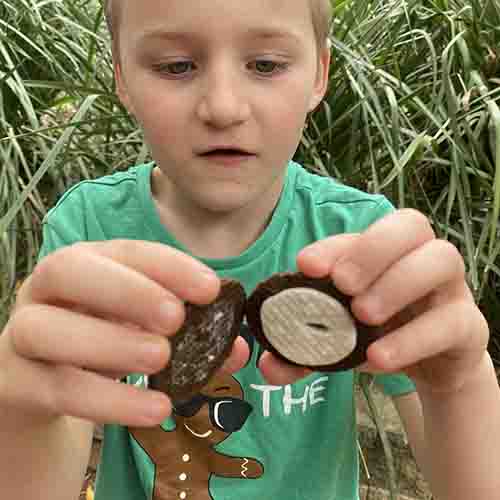
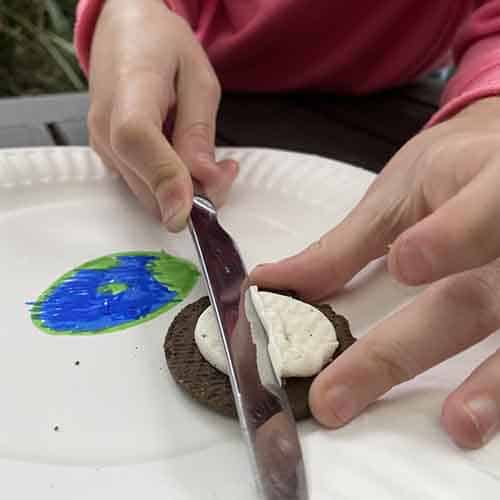
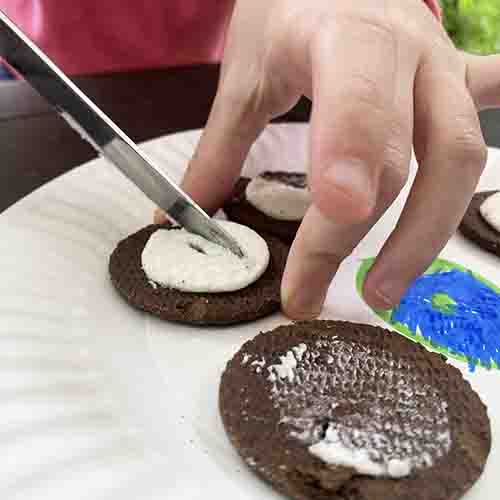
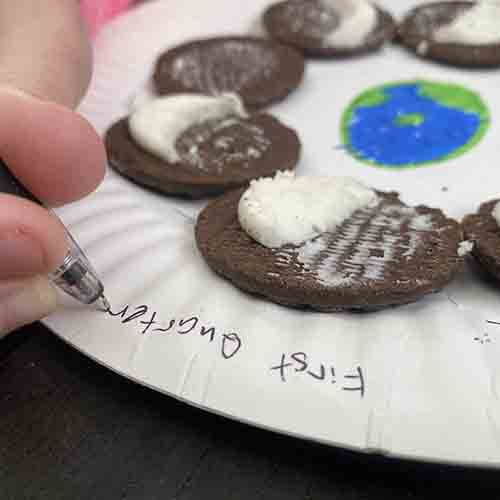
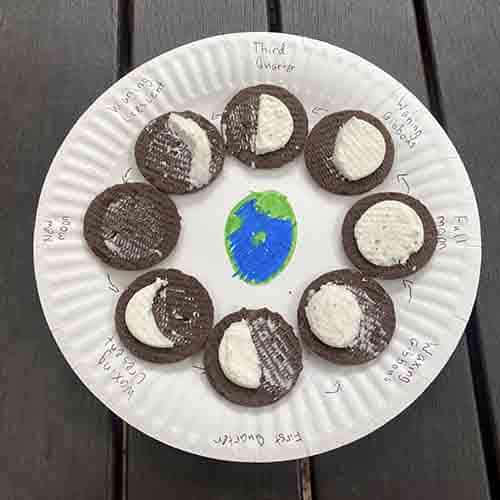


























Comments